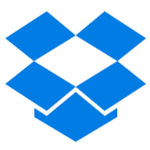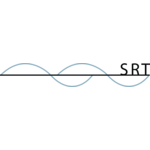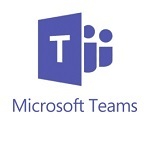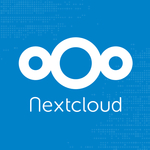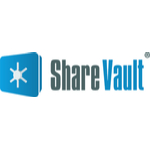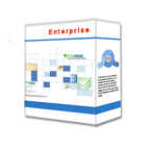TechnologyCounter provides genuine, unbiased real user reviews to help buyers make informed decisions. We may earn a referral fee when you purchase through our links, at no extra cost to you.
List of 15 Best File Sharing Software
Showing 1 - 15 of 76 productsTresorit is a reliable and secure cloud storage service that allows you to store, share, and access your files from anywhere and on any device. With state-of-the-art encryption and strict privacy policies, Tresorit is trusted by millions of individua...Read Tresorit Reviews
Looking for a simple and secure way to store and access all your important files? Look no further than Dropbox. This innovative cloud storage service allows you to seamlessly store, share, and sync your files across multiple devices, making it the pe...Read Dropbox Reviews
Binfer is a solution for efficient file transfer and communication. This powerful software is designed to simplify the way you share and collaborate on files, without any bulky attachments or complicated processes. Binfer makes it quick, easy, and se...Read Binfer Reviews
Cornerstone MFT Server is a sophisticated file transfer solution designed to streamline and secure data exchange processes. With advanced features and robust capabilities, Cornerstone MFT Server offers businesses an efficient and secure solution for...Read Cornerstone MFT Server Reviews
Digital Pigeon is a file-sharing software that is transforming the way businesses and creatives transfer their digital assets. Streamlining the process with its fast, reliable, and user-friendly interface, Digital Pigeon enables swift delivery of pro...Read Digital Pigeon Reviews
Samepage, the all-in-one collaboration tool designed to streamline communication and boost productivity for teams of all sizes. With features such as real-time collaboration, task management, and file sharing, Samepage makes it easy for teams to stay...Read Samepage Reviews
Sync.com is a user-friendly and secure cloud storage and file sharing platform designed to simplify your digital life. With its intuitive interface security features, Sync.com allows you to easily store, access, and share your files from anywhere. Sa...Read Sync.com Reviews
WeTransfer is a file-sharing platform that allows users to easily and securely send large files without the hassle of complicated programs or slow transfer speeds. With a simple and user-friendly interface, WeTransfer makes sharing files a breeze, al...Read WeTransfer Reviews
GoAnywhere MFT is a and versatile file transfer solution designed to securely is a ly manage the movement of data within your organization. With its user-friendly interface and robust features, GoAnywhere MFT simplifies and streamlines your file tran...Read GoAnywhere MFT Reviews
Microsoft Teams is a collaboration tool for any team. With its seamless integration of chat, video conferencing, file sharing, and more, Teams streamlines communication and boosts productivity. Say goodbye to endless email chains and scattered inform...Read Microsoft Teams Reviews
Nextcloud is a and versatile software that revolutionizes the way you store, access, and collaborate on your files, documents, and media. With its user-friendly interface, secure data encryption, and seamless integration with various devices, Nextclo...Read Nextcloud Reviews
AppsTec DMS, a powerful document management system designed to revolutionize the way businesses handle their digital assets. With its user-friendly interface features, AppsTec DMS streamlines the process of organizing, storing, and sharing documents,...Read AppsTec DMS Reviews
FileHold is a top-rated document management software designed to simplify and streamline document organization for businesses of all sizes. With its intuitive interface, secure storage, is a searching capabilities, FileHold empowers companies to mana...Read FileHold Reviews
- What Is File Sharing Software?
- Top Reasons Why Businesses Need File Sharing Software?
- What Are the Top Key Features of File Sharing Software?
- What Are the Top Benefits of File Sharing Software?
- What Are the Steps to Choose the Right File Sharing Software?
- What Are the Types of File Sharing Software for Different Industries?
- What Are the Technology Trends for Best File Sharing Software?
- What Are the Deployment Options for File Sharing Software?
What Is File Sharing Software?
File-sharing software refers to a category of computer programs that facilitate the exchange of digital content across several computers or devices, allowing for remote downloading and uploading operations. Top file transfer software facilitates the seamless exchange of various forms of data among users, encompassing photographs, music, papers, and other file types.
Online file sharing system facilitates the simultaneous access of content by several users, enabling collaborative document editing and group discussions in chatrooms. File transfer systems enable users to exchange their data with each other through a network connection, such as the Internet.
Typically, the process entails an individual establishing a collaborative folder or library, wherein they compile and incorporate content intended for dissemination. Subsequently, the individual extends invitations to other individuals to join as users of the designated file or folder.
After the inclusion of users, they are able to get and/or acquire the shared files from any geographical location through utilization of the file-sharing program. The utilization of file-sharing software is a commendable approach to enhance collaboration and optimize efficiency by facilitating the rapid and secure exchange of information via the internet.
Moreover, the best file sharing software is particularly advantageous for extensive projects that entail the collaboration of individuals situated in diverse regions, as it ensures universal accessibility to shared information.
Top Reasons Why Businesses Need File Sharing Software?
1. Improved collaboration: File sharing software enables teams to securely exchange files, hence allowing efficient communication among internal and external stakeholders.
2. Increased productivity: Through the utilization of file transfer systems, organizations have the ability to streamline and expedite many labor-intensive procedures, including the arduous task of sifting through emails and overseeing numerous iterations of a singular file.
3. Reduced costs: The best file sharing software is implemented in a cloud-based environment, enabling organizations to circumvent expenditures related to hardware, maintenance, and storage capacity, while concurrently mitigating bandwidth requirements.
4. Improved security: The best file sharing tools provide robust data encryption mechanisms to mitigate the risk of unauthorized access to confidential files.
5. File Recovery: In the event of an unforeseen system failure, businesses have the option to utilize file sharing systems as a means of recovering lost files.
6. Integrations: The integration of online file sharing software with other applications and services, such as office suite solutions or social networking tools, offers enhanced ease and flexibility to users.
7. Remote access: Employees have the ability to safely retrieve their data from any device and any place, as well as distribute them to other individuals.
8. Detailed analytics: Solutions facilitate the ability of enterprises to effectively monitor, track, and analyze the file sharing actions of users.
9. Improved customer experience: File sharing systems facilitate efficient communication and information dissemination within firms, allowing for prompt and correct responses to client requests.
10. Brand consistency: By employing a file sharing solution, organizations have the ability to uphold the integrity of their company brand and guarantee the consistency of information.
11. Resilience: The best file sharing software are known for their dependability and robustness, as they assist organizations in upholding a consistent transmission of data and information across users.
12. Easy Deployment: Numerous solutions can be expeditiously and effortlessly implemented, enabling firms to leverage their functionalities without necessitating substantial time and labor investments in the setup process.
13. Automation: The best file sharing tools streamline several operations, including file transfer, synchronization, approval, and sharing, hence enhancing efficiency by reducing the time spent on routine activities.
14. Auditing: The file transfer systems offer comprehensive auditing functionalities that aid in the identification and prevention of unlawful access or utilization of files.
15. Mobile access: The best file sharing software can be utilized by businesses to enable remote access to data through mobile devices, thereby offering an additional level of convenience and security.
What Are the Top Key Features of File Sharing Software?
The primary key features of file sharing software are as follows:
1. Cross-platform and Multi-user Interoperability: The purpose of the best file transfer software is to facilitate the exchange of files across many devices and platforms, irrespective of the user's operating system. Furthermore, it is possible for numerous users to concurrently view the same file.
2. Secured Collaboration: File sharing and collaboration platforms are equipped with many safe features to ensure the secure handling of sensitive data. These features include user authentication, data encryption, secure protocols, and activity tracking methods.
3. Multi-device Access: The majority of online file sharing software enables users to access and share files across various connected devices, such as smartphones, tablets, laptops, and desktop PCs.
4. Synchronized Storage: The best file transfer tools with synchronized file storage capability facilitates the synchronization of file modifications across many devices, hence ensuring consistency among all devices.
5. Cloud Storage: Online file sharing system frequently include cloud storage functionality, which allows users to conveniently save and retrieve files from any location worldwide.
6. File Versioning: The method of file versioning involves the storage and convenient retrieval of previous iterations of a given file, ensuring that the most recent version remains readily accessible.
7. Controlled Sharing: The best file sharing systems enables users to exercise control over the accessibility and editing privileges of files by bestowing several degrees of access.
8. File Tracking and Auditing: The majority of the best file transfer software maintain a record of user activity and retain a version history for all files. Top file sharing software feature facilitates the utilization of sophisticated file tracking and auditing functionalities.
What Are the Top Benefits of File Sharing Software?
1. Increased Efficiency: File sharing software facilitates efficient and streamlined transmission of documents among diverse users, resulting in enhanced speed and convenience. This facilitates enhanced cooperation and team productivity by mitigating the delays associated with manual document transfers and expediting project schedules.
2. Cost Savings: The utilization of online file sharing tools has the potential to mitigate expenses linked to document storage and physical media, such as CDs, hence resulting in long-term financial savings for enterprises and organizations.
3. Improved Security: The best file transfer software provides a comprehensive set of security procedures and encryption mechanisms that effectively safeguard critical information throughout the transfer process.
4. Versatility: Contemporary the best file sharing systems solutions exhibit compatibility with a diverse range of devices, operating systems, and file formats, hence facilitating the exchange of data and documents across systems that would otherwise be incompatible.
5. Data Accessibility: The best file transfer tools facilitates the seamless transfer and storage of documents, hence enhancing users' ability to conveniently access those information at their desired time and location.
6. Increased Collaboration: The utilization of online file sharing tools facilitates seamless cooperation and discourse among team members situated in geographically dispersed locations or disparate organizational units.
What Are the Steps to Choose the Right File Sharing Software?
1. Identify your organization’s file-sharing needs: Begin by examining the many categories of files that are commonly shared, taking into account their dimensions and file format. One should take into account the quantity of users who will engage in the act of uploading or downloading files, together with the frequency at which file transfers occur.
2. Create an assessment checklist to evaluate available solutions: Establish a comprehensive framework of criteria for the purpose of evaluating software solutions.
Several factors that are commonly taken into consideration include the features offered by the product, the level of user-friendliness it possesses, its pricing structure, the quality of assistance provided, and the level of security it ensures.
3. Research file-sharing software options: Conduct research on top file sharing software options that align with the specific requirements of your firm. Furthermore, it is imperative to take into account the scalability requirements of your firm, including the potential need for the solution to handle increased user capacity or bandwidth demands.
4. Ask for a demo: Kindly solicit a demonstration or trial of the solutions that have been narrowed down in order to conduct a more comprehensive evaluation of their features and usability.
5. Make an informed decision: Select the appropriate answer by considering the data collected and evaluating the best file sharing systems options that have been narrowed down. This essay aims to analyze and contrast the pros and drawbacks associated with each option.
6. Implement the software: After selecting the best file sharing tools, commence the implementation phase. Top file sharing software may encompass the process of integrating the proposed solution with the pre-existing infrastructure or transferring the current data to the designated platform.
What Are the Types of File Sharing Software for Different Industries?
There are several types of file sharing software available that can be tailored to different industries to meet specific needs.
1. Cloud Storage Software: Cloud based file sharing system enable teams to collaboratively exchange and retrieve documents and information seamlessly, irrespective of the platform, device, or geographical location.
Cloud based file sharing system platforms offer functionalities like as automated synchronization, simultaneous collaboration, and version management. Prominent instances of cloud storage software encompass Dropbox, Google Drive, and OneDrive.
2. Collaboration Software: Collaborative software facilitates immediate and interactive communication and information exchange among team members, typically in a synchronous manner. These apps include functionalities like as administrative controls and security settings, with tools for communication, document sharing, and video conferencing. Prominent examples of collaboration software encompass Microsoft Teams, Slack, and Zoom.
3. File Sync Software: File synchronization software is utilized to maintain the synchronization of distinct data sets, enabling users to access data from various devices. The software offers several functionalities, including encryption, backup and restore capabilities, as well as permission control mechanisms. Prominent instances of file synchronization software encompass Nextcloud and Syncany.
4. FTP and SFTP Software: The utilization of File Transfer Protocol (FTP) and Secure File Transfer Protocol (SFTP) software facilitates the secure transmission of data between computer systems.
The software offers functionalities such as the ability to regulate speed and organize files in a hierarchical manner. Prominent examples of FTP and SFTP software are WS_FTP and WinScp.
5. Backup and Recovery Software: Backup and recovery software facilitates the automated reinstatement of data that has been lost, compromised, or impaired. The software offers functionalities such as the ability to schedule tasks, implement encryption measures, and exclude specific files.
Prominent instances of backup and recovery software encompass Acronis and Veeam.
What Are the Technology Trends for Best File Sharing Software?
The optimal file sharing software commonly integrates a variety of functionalities in order to facilitate a secure and seamless transfer of files across both corporate entities and individual users. Several significant technical trends have emerged in the realm of file sharing software.
These trends hold considerable importance in shaping the landscape of file sharing technology.
1. Increasing levels of encryption: The significance of ensuring safe and secret information exchange is of utmost importance, thus necessitating the utilization of file sharing software that incorporates advanced encryption methods and algorithms.
2. Cloud-hosted services: Cloud-hosted file sharing systems offer several advantages over traditional physical servers. These include enhanced scalability, heightened security measures, and nearly limitless storage capacity.
3. Cross-platform compatibility: The demand for the best file transfer software that is compatible with many devices and operating systems has experienced significant growth in the context of the expanding mobile and multi-device landscape.
4. Integration with collaboration tools: An optimal file sharing program should include the capability to smoothly interact with various communication tools such as video conferencing, instant messaging, and group chat services.
5. Analytics and user feedback: In contemporary times, software providers are progressively relying on analytics and user feedback as means to oversee and evaluate performance, security, and client pleasure.
6. Automation: The automation of intricate manual procedures for the best file transfer tools is of utmost importance in order to enhance collaboration and optimize the overall user experience.
What Are the Deployment Options for File Sharing Software?
There exist three principal deployment alternatives for file sharing software.
1. The initial choice is on-premises deployment, wherein the software is deployed, operated, and maintained on servers owned by the customer. This feature enables enhanced security management and guarantees the localization of all data storage within the customer's premises.
2. The other choice entails cloud deployment, wherein the program is hosted on a Cloud based file sharing system such as Microsoft Azure or Amazon Web Services. This obviates the necessity for customers to personally manage and upkeep their own servers, while concurrently ensuring secure accessibility to the file sharing system.
3. The third alternative is a hybrid deployment, which entails a fusion of the two aforementioned techniques. This technique enables customers to derive advantages from both on-premises and cloud deployment approaches, contingent upon their individual preferences.
The inherent adaptability of the hybrid method renders it a highly appealing choice for numerous enterprises.

